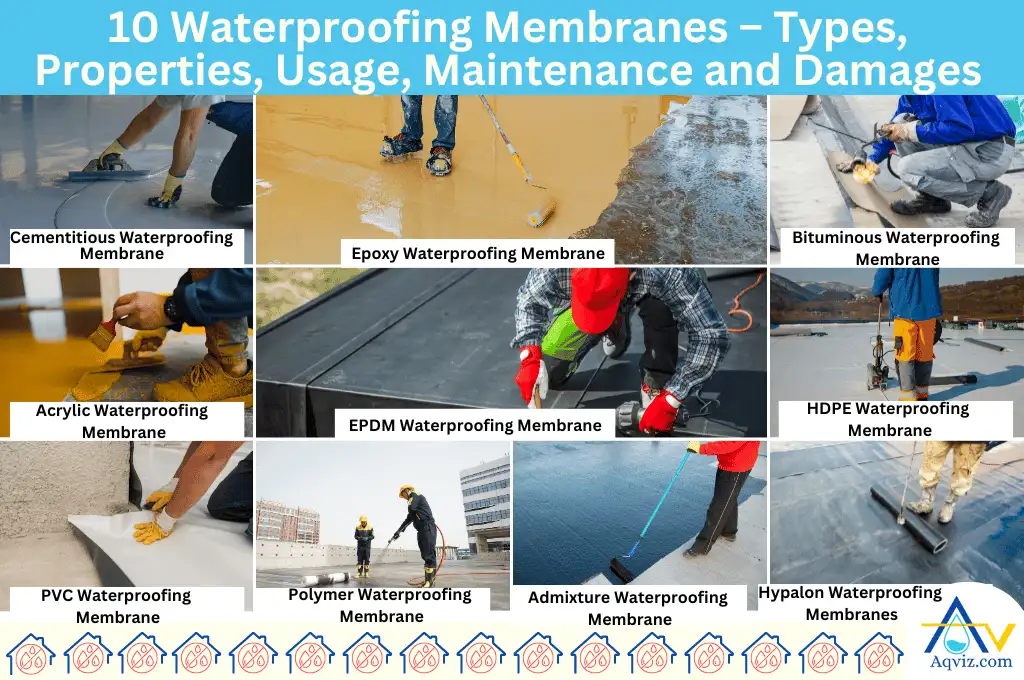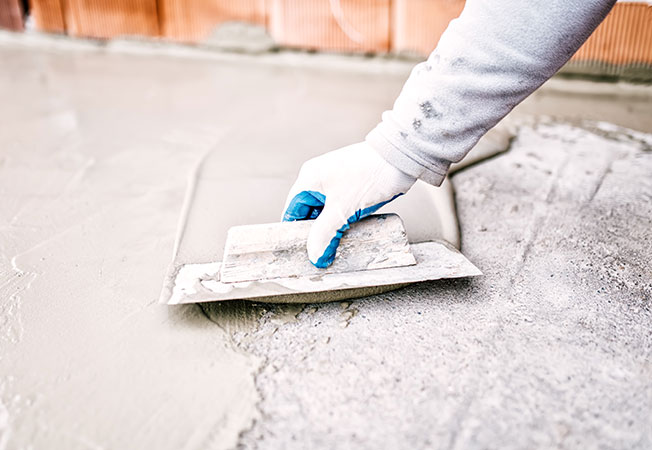Types of Waterproofing: Discovering the Various Techniques and Their Applications
Waterproofing is a vital facet of construction and upkeep. It protects structures from the destructive impacts of water damages. There are several techniques readily available, each with its distinct applications and advantages. From membrane systems to cementitious options, recognizing these options is crucial for efficient execution. The choice of waterproofing technique can substantially impact longevity and longevity. Checking out these numerous strategies reveals their unique benefits and possible challenges, triggering more factor to consider of perfect options.
Membrane Layer Waterproofing Systems
Membrane waterproofing systems offer as a crucial barrier versus water breach in numerous structures. These systems generally include slim sheets made from products like rubber, thermoplastic, or bitumen, which are put on surfaces to avoid dampness infiltration. They can be installed above or below grade and are especially efficient in locations prone to high water exposure, such as basements, roof coverings, and foundations.The setup procedure includes cleansing the substratum, applying adhesives or guides, and precisely suitable the membrane layer to assure full coverage. Membrane layer systems can be either totally stuck, mechanically affixed, or laid loose, relying on the details needs of the task. They provide toughness and versatility, fitting structural movements without compromising their waterproofing capacities. In addition, these systems can be enhanced with extra layers for enhanced defense. Eventually, membrane waterproofing systems are essential for guarding frameworks against water damages and preserving long-term honesty.
Liquid-Applied Waterproofing Coatings
Liquid-applied waterproofing finishes offer a versatile remedy for securing surfaces from water seepage - Landscape drainage Omaha. These coverings contain liquid products that, when applied, create a smooth, flexible membrane layer. Their adaptability enables application on numerous substratums, including concrete, steel, and timber. The coverings can be made use of in diverse environments, from residential to commercial settings, making them suitable for roofs, structures, and below-grade structures.One considerable benefit of liquid-applied finishings is their ability to comply with uneven shapes and pass through cracks, producing a durable barrier against dampness. They frequently show exceptional bond residential or commercial properties and resistance to UV radiation, ensuring durability and durability. Furthermore, the application procedure is generally simple, allowing for fast installment and decreased labor expenses. This approach also reduces the threat of water merging, as the continuous layer successfully routes water away from susceptible locations. In general, liquid-applied waterproofing coatings are an efficient option for thorough water security
Cementitious Waterproofing Solutions

Cementitious waterproofing solutions use a durable alternative for frameworks requiring reliable wetness defense. These systems mostly utilize a blend of concrete, sand, and chemical additives to produce a waterproof obstacle. They are often related to surface areas such as concrete walls, structures, and floorings, offering why not try these out a sturdy, lasting protection against water intrusion.One of the crucial benefits of cementitious waterproofing is its ease of application; it can be used making use of a brush, roller, or spray, making it suitable for different task sizes. Furthermore, this method works with several surfaces and can usually be used combined with various other waterproofing techniques.Cementitious options are particularly efficient in settings where water exposure is a problem, such as basements or below-grade frameworks. Their superb adhesion buildings ensure that they bond well with substrates, supplying a strong and impenetrable layer versus dampness infiltration.
Bentonite Waterproofing
Bentonite waterproofing is a very reliable approach that utilizes sodium bentonite clay to create a natural barrier against water. This technique makes use of the special buildings of bentonite, which expands upon call with water, securing any kind of possible leakages and protecting against moisture seepage. It is commonly made use of in numerous applications, including structure walls, tunnels, and retaining wall surfaces, where water resistance is essential.Bentonite can be used in numerous forms, such as panels or blankets, offering versatility in setup. Its capability to self-seal makes basf masterseal it an attractive alternative for locations subject to moving soil or rising and falling water levels. Additionally, bentonite waterproofing is eco-friendly, as it is an all-natural material that does not introduce harmful chemicals right into the environments.
Drain and External Waterproofing Equipments
Reliable waterproofing commonly includes a combination of strategies, consisting of drain and outside systems. Drainage systems, such as French drains pipes and sump pumps, are developed to redirect water far from structures, reducing hydrostatic stress against foundations. These systems are crucial in protecting against water buildup that can result in architectural damages and mold growth.External waterproofing, on the various other hand, includes applying safety barriers to the structure's exterior. Methods such as the installation of water-proof membranes, layers, or sealants can aid protect against water infiltration. This approach not only protects the foundation yet additionally improves the total longevity of the structure.Together, drain and external waterproofing systems create a detailed option to manage water successfully. By implementing these strategies, home owners can guard their investments versus the harmful effects of moisture, making certain long-lasting stability and safety for their structures.
Regularly Asked Questions
Just how Do I Pick the Right Waterproofing Method for My Project?
Selecting the best waterproofing her latest blog method depends upon aspects such as project type, environmental conditions, budget plan, and preferred durability. Reviewing these aspects permits educated choices tailored to particular demands and needs.

Can Waterproofing Be Applied in Winter Conditions?
Waterproofing can be used in cold weather conditions, but it needs specific products and techniques. Cold temperatures may influence healing times and adhesion, demanding mindful selection of products developed for low-temperature application.
What Are the Typical Indicators of Waterproofing Failing?
Usual indicators of waterproofing failure include visible water stains, peeling paint, moist smells, mold and mildew development, and splits in wall surfaces or structures. Foundation waterproofing Omaha. These indicators suggest that moisture is penetrating the barrier, compromising its effectiveness
How Much Time Does Waterproofing Last Before Needing Maintenance?
The long life of waterproofing differs, typically lasting between 5 to one decade. Variables such as worldly high quality, ecological problems, and upkeep methods influence its sturdiness, requiring regular assessments to ensure reliable defense versus water breach.
Exist Eco-Friendly Waterproofing Options Available?
The question of green waterproofing alternatives reveals a growing interest in sustainable materials (Landscape drainage Omaha). Different natural substances, such as plant-based sealers and recycled items, use efficient remedies while reducing ecological impact, appealing to environmentally conscious customers